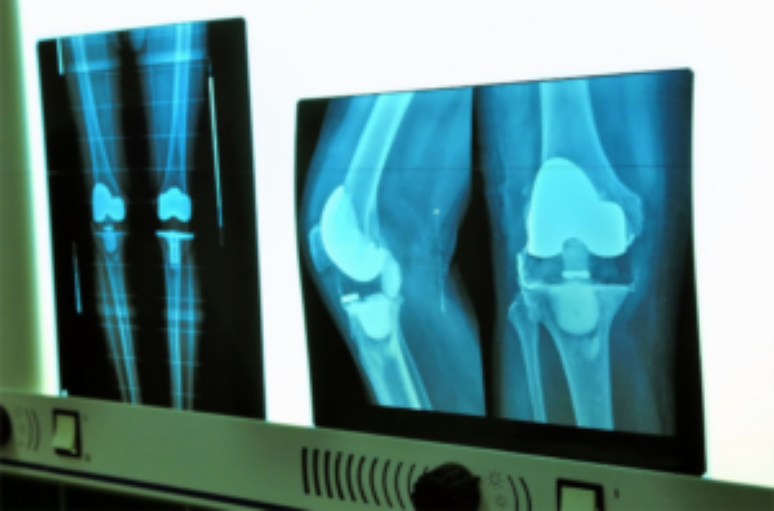The orthopedist clarifies the main doubts about the operation and highlights its benefits for the patient’s quality of life.
The joints are perhaps the part of our body that suffers the most from the impacts of aging. In this scenario, knee replacement surgery can be one of the most suitable strategies to ensure health and quality of life. However, when it comes to surgery, especially in the elderly, it is natural for some people to fear the procedure. Concerns about safety and recovery times are some of the main ones. Therefore, in this article you will understand the main issues related to knee replacements in the elderly. Furthermore, dr. Pedro Baches, an orthopedic specialist in knee and orthopedic oncology, provides tips on the benefits the procedure will bring.
When is the use of the prosthesis recommended?
A very common concern among patients is when this process is recommended. In general, knee replacement is needed when other nonsurgical procedures fail to provide solutions.
“The prosthesis is like a safe haven. Because when the person has a lot of pain in the knee and the treatments no longer work, he still has that solution. That is, he makes the prosthesis and improves the condition of the joint, “explains Dr. . Peter Baches.
For this reason, especially in cases where the patient has already taken many drugs, done physiotherapy and strengthening exercises and, despite this, the knee still presents difficulties, the prosthesis becomes an alternative.
Are there any contraindications?
As with most surgeries, all cases must be analyzed individually. Thus, it is possible to identify if the patient has any condition that makes the process difficult. However, there are not many contraindications regarding the use of the prosthesis. “Of course, if the person is very weak in health, this can be a dangerous surgery. It is better to improve the patient’s condition to perform the surgery safely,” emphasizes the orthopedist. Also, although it is a rare situation, people with metal allergies can also be found. In cases like this the traditional prosthesis is not a recommendation, it is necessary to have a specific one.
“Another situation that may indicate a contraindication is if the person has a bone infection. This could be a risk to the prosthesis. In this scenario, a thorough evaluation before performing the implant surgery is interesting,” points out the dr. Peter Baches.
What needs to be evaluated after implantation of the prosthesis?
The purpose of implanting the prosthesis is to return the person to normal as quickly as possible. “Within 15 minutes, this prosthesis has cement anchoring it to dry bone, so, in theory, the person can already walk,” she explains. Therefore, with the prosthesis, the intention is for the patient to be able to walk. However, some care must be taken at this stage. Therefore, it is interesting to give him one day of rest and adaptation so that by the second he can walk normally. The reason for this, according to Dr. Pedro Baches, is that immobility is very harmful, especially for older patients. This situation can favor thrombosis, pneumonia and other scenarios that can affect your health. Therefore, after implantation of the prosthesis, some details must be observed. Gait training, for example, is essential so that the person can relearn how to walk safely. In addition, the bandage also needs to be checked more carefully and changed periodically. Another issue that needs attention is whether the region is gradually deflating. Physical therapy in the beginning can also be of interest to start gaining muscle strength.
“The goal is to try to restore the quality of life. To bring the person back to having their activities as close to normal as soon as possible. Something that, with pain and wear, they could not,” says the specialist.
html[data-range=”xlarge”] figure image img.img-9cb852af5787af55c3bc07d378e94364rmn3z5ej { width: 774px; height: 511px; }HTML[data-range=”large”] figure image img.img-9cb852af5787af55c3bc07d378e94364rmn3z5ej { width: 548px; height: 362px; }HTML[data-range=”small”] image figure img.img-9cb852af5787af55c3bc07d378e94364rmn3z5ej, html[data-range=”medium”] figure image img.img-9cb852af5787af55c3bc07d378e94364rmn3z5ej { width: 564px; height: 372px; }
What care should the elderly have?
The first step after knee replacement implantation is to prioritize the rehabilitation process. It must be suitable for every situation. The goal is for the elderly to regain balance by strengthening the muscles.
“The elderly person with a prosthesis needs to focus on keeping his balance, walking and doing his own activities, to gain a lot of strength. What concerns me the most are the muscle strength exercises for the buttocks, thighs and calves”, says the orthopedic surgeon.
In this way it is possible to protect the prosthesis and, above all, to give greater safety to the elderly. As is known, one of the biggest threats to their health is falls, which can cause serious fractures.
Are there any health risks?
As with any surgical procedure, there are inevitable risks. However, this decision-making process must always strike a balance in the equation between the risks and benefits of surgery. Therefore, it is indicated only when its positive points for the health and life of the elderly are greater than the associated risks. “The risks were minimized by performing a good clinical evaluation, a good anesthetic procedure and a quick surgical intervention,” explains the specialist. However, it is important to emphasize that failure to make the prosthesis is also a risk. Agree with the doctor. Pedro Baches, an osteoarthritis patient who is already in severe pain, has difficulty performing activities that were previously normal, such as walking.
“Besides the pain, the patient’s quality of life and cardiopulmonary condition are greatly affected. Wear and tear on the knee will worsen the cardiological condition, because this patient practically does not move anymore,” he points out.
In this way, the prosthesis is able to guarantee these elderly people a return to a normal life and an improvement in their clinical conditions. Returning to physical activities, for example, will help with weight loss and improved cholesterol.
“Of course, every surgery has its risks. But it is important to emphasize the benefits. When they are greater than the risks, we indicate the procedure”, concludes Dr. Pietro Baches.
*Dr. Pedro Baches Jorge is an Orthopedist, specializing in Knee and Sports Medicine.
Founder of the Sports Medicine Center of the Sírio Libanês Hospital and Member of the Sports Trauma Group of the Santa Casa de São Paulo.
Scientific Director of the Brazilian Society of Arthroscopy and Sports Trauma (SBRATE) and Member of the Brazilian Society of Knee Surgery (SBCJ).
Source: Terra
Ben Stock is a lifestyle journalist and author at Gossipify. He writes about topics such as health, wellness, travel, food and home decor. He provides practical advice and inspiration to improve well-being, keeps readers up to date with latest lifestyle news and trends, known for his engaging writing style, in-depth analysis and unique perspectives.





![A more beautiful life in advance: Javad wants to become a father… What awaits you in the week of November 3-7, 2025 [SPOILERS] A more beautiful life in advance: Javad wants to become a father… What awaits you in the week of November 3-7, 2025 [SPOILERS]](https://fr.web.img5.acsta.net/img/63/4f/634f5a2c00a51e983bfa1f3c7fe4a017.jpg)

